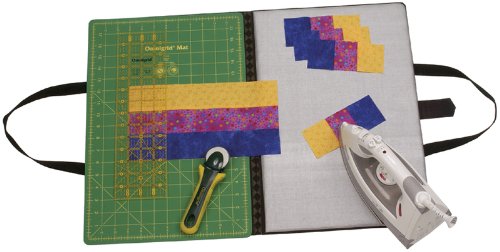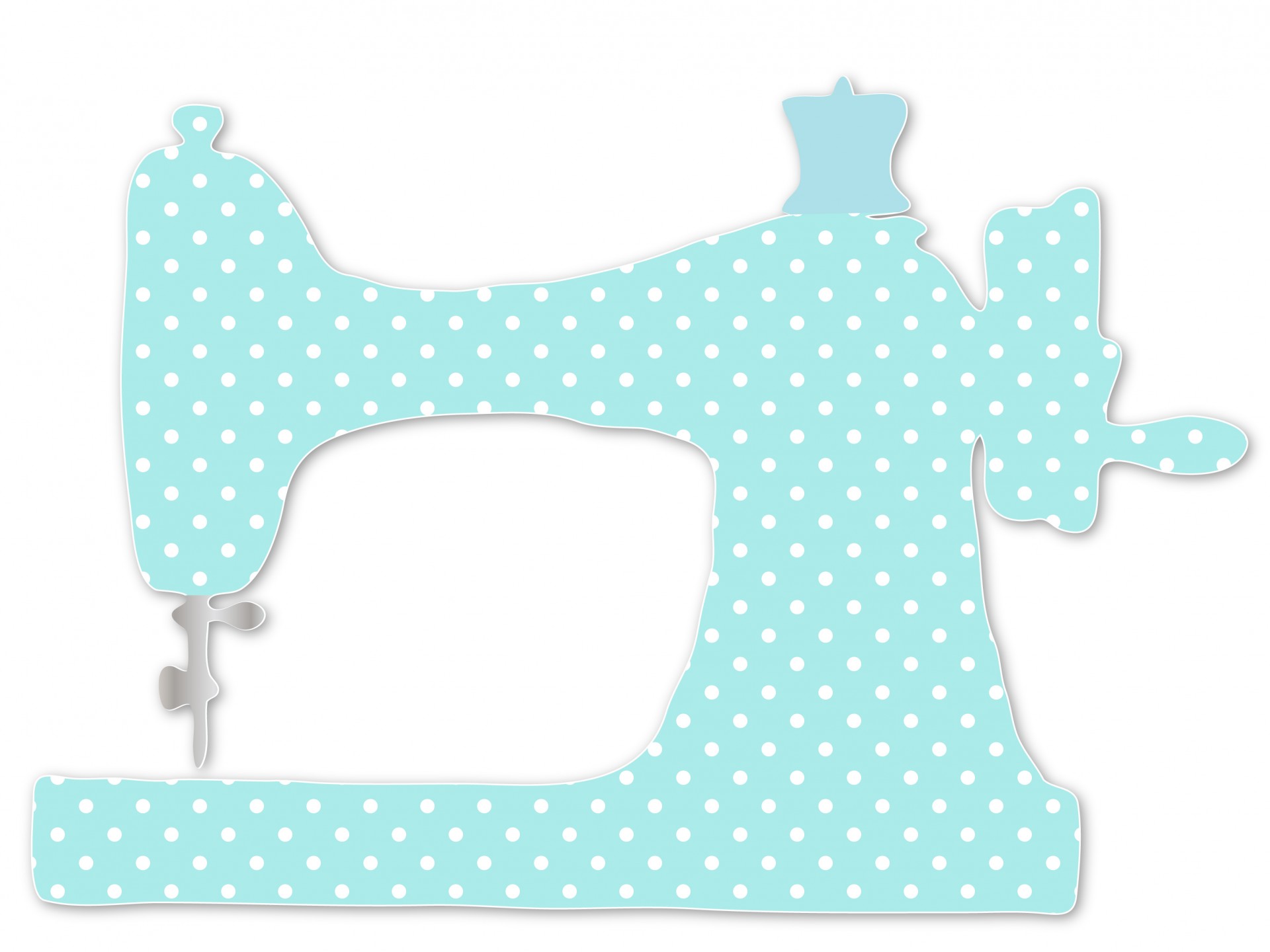I have been sewing nearly all my life – I can remember sitting on my mom’s lap and learning to sew when I was tiny. I really started learning more than just the basics when I was old enough to join 4-H, and I have been sewing off and on ever since. Once I got older, out of school, and was on my own (read – with the associated responsibilities and time constraints of an adult), the most sewing I did was on a whim with a specific project, mending, the occasional baby blanket, a gift, or a Halloween costume.
We finally live in a home where I am able to have my sewing machine out all the time, and I have started sewing a lot. I have made multiple quilts, but the biggest project I worked on lately was making costumes for our local playhouse production of “Annie”. Those orphan jammies were tedious, but a fun reminder of how much I enjoy sewing. I am now in the middle of making several projects.
One thing I’ve realized as I’ve gotten back into sewing is that, while I am very well equipped when it comes to tools and supplies – most of which I’ve had for decades – there are all sorts of nifty tools that would make sewing a little easier, and there are some that I definitely need. That being said, I thought I’d make a combination wish list/tool round-up to talk about. The wish list includes a lot of items I would love to have but won’t spend money on myself.
ESSENTIALS
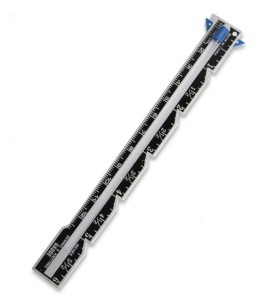 Gauges are available in a variety of forms. The most common to have is a six inch aluminum ruler with a slider. More elaborate forms of this gauge are a bit longer allowing you to full utilize six inches while working with the gauge. Gauges are handy to have for all hand sewing, marking alterations, hemming, checking the width of your seam allowances and more. The straight edge type of gauge is also useful as a straight edge when drawing alteration lines. Do not allow your metal gauges to get bent. Just like a car fender, once it gets bent, it is not going to go back to the same size or shape it was before, causing the measuring aspect of the gauge to be distorted.
Gauges are available in a variety of forms. The most common to have is a six inch aluminum ruler with a slider. More elaborate forms of this gauge are a bit longer allowing you to full utilize six inches while working with the gauge. Gauges are handy to have for all hand sewing, marking alterations, hemming, checking the width of your seam allowances and more. The straight edge type of gauge is also useful as a straight edge when drawing alteration lines. Do not allow your metal gauges to get bent. Just like a car fender, once it gets bent, it is not going to go back to the same size or shape it was before, causing the measuring aspect of the gauge to be distorted.
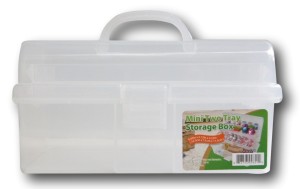 I use this really simple, inexpensive clear plastic tackle box that I got at Wal-Mart. I also found it at Amazon. An expensive tool kit is not necessary, in my opinion, as long as you have something to keep your sewing notions organized, portable, and easy to access. The box I have is 8.9-Inch wide and has 2 cantilever trays that separate when you open the lid for easy access to the contents.
I use this really simple, inexpensive clear plastic tackle box that I got at Wal-Mart. I also found it at Amazon. An expensive tool kit is not necessary, in my opinion, as long as you have something to keep your sewing notions organized, portable, and easy to access. The box I have is 8.9-Inch wide and has 2 cantilever trays that separate when you open the lid for easy access to the contents.
Tailor’s Chalk, Water Soluble Marking Pencils
, or Fabric Marking Pens

 Avoid mistakes later by marking your fabric first. And, always use marking tools designed specifically for use on fabrics. There are tons of different kinds of fabric marking tools ranging from your basic #2 pencil to fancier, specialized tools.
Avoid mistakes later by marking your fabric first. And, always use marking tools designed specifically for use on fabrics. There are tons of different kinds of fabric marking tools ranging from your basic #2 pencil to fancier, specialized tools.
Personally, I love the Dritz Marking Pen. It has two ends – one blue and one purple. The purple marking end is disappearing ink, which is really nice for quilting projects. For example, I’m working on the Moda Sampler Block Shuffle, which is a project of 30 blocks with three blocks released for 11 weeks (taking one off for Christmas) . I can mark my sew lines on the individual blocks, but by the time I’m ready to assemble the quilt in a few months, the marking lines will be gone and no longer a distraction. The other end of the marking pen is blue and is permanent until washed. It is great for marking notches, darts, etc. , on garment projects.
There is a great article on Craftsy titled Fabric Marking Tools that gives a lot more detail and hints about which tools to use.
Thread
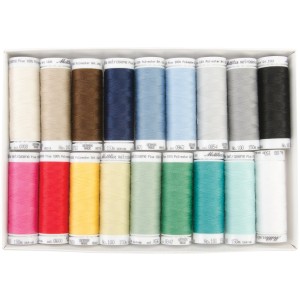 For a while, whenever I made a project, I would buy thread to match. Then when we moved,and I unpacked it all, I had visions of hoarders. Until I started working on all the random projects I’ve been making lately, and I haven’t had to buy any thread. I’ve emptied at least three spools of white thread, and have used other colors from stash as I needed. I mostly have all-purpose thread
For a while, whenever I made a project, I would buy thread to match. Then when we moved,and I unpacked it all, I had visions of hoarders. Until I started working on all the random projects I’ve been making lately, and I haven’t had to buy any thread. I’ve emptied at least three spools of white thread, and have used other colors from stash as I needed. I mostly have all-purpose thread because I don’t have a sewing specialty as much as just a love for sewing.
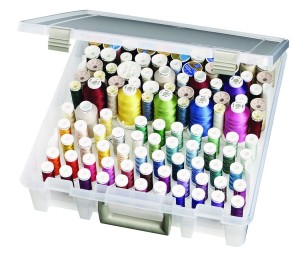
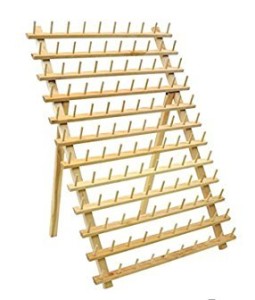 Because we live in such a small space, my sewing equipment needs to have the ability to be put away and enclosed when company comes over. As a result, I am not able to utilize a nice wooden spool rack like I would ultimately like. I use a flat plastic box made from similar material as my notions box, and it has two removable thread trays that securely hold thread spools regardless of how the closed box is stored.
Because we live in such a small space, my sewing equipment needs to have the ability to be put away and enclosed when company comes over. As a result, I am not able to utilize a nice wooden spool rack like I would ultimately like. I use a flat plastic box made from similar material as my notions box, and it has two removable thread trays that securely hold thread spools regardless of how the closed box is stored.
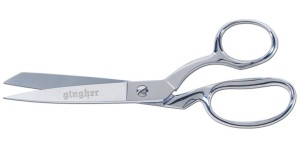 Dressmaker’s Shears have a versatile longer length cut and blades strong enough to trim and cut multiple layers of fabric effortlessly. The longer cut is ideal for cutting out patterns and trimming seams. The bent handle allows for smooth, comfortable cutting across a tabletop or counter.
Dressmaker’s Shears have a versatile longer length cut and blades strong enough to trim and cut multiple layers of fabric effortlessly. The longer cut is ideal for cutting out patterns and trimming seams. The bent handle allows for smooth, comfortable cutting across a tabletop or counter.
I have a set of Gingher Featherweight Dressmaker’s Shears, and I love them! They are much lighter weight than standard steel shears; however, I don’t feel like the blades are as strong and would struggle with harder to cut fabric.
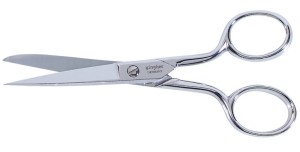 Thread snips—also called thread nippers, thread clippers, and thread cutters—are incredibly handy little scissors to have around your craft room or sewing studio. They are perfect for sewers, multi-crafters, and yarn crafters alike, they’re compact, light, and made to be operated quickly (most are spring-loaded), making them ideal for snipping threads, notching fabric, or clipping yarn ends while you work.
Thread snips—also called thread nippers, thread clippers, and thread cutters—are incredibly handy little scissors to have around your craft room or sewing studio. They are perfect for sewers, multi-crafters, and yarn crafters alike, they’re compact, light, and made to be operated quickly (most are spring-loaded), making them ideal for snipping threads, notching fabric, or clipping yarn ends while you work.
I have a Featherweight Snip set that came with my Ginger Shears, and I really like them; however, as with the shears, I don’t feel as though they are strong enough to cut through really thick items.
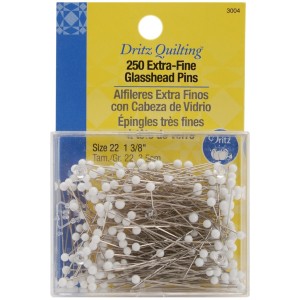 Glass head pins are great, especially when ironing complicated seams or quilts. The glass head won’t melt when being ironed, preventing damage to both the fabric and the iron.
Glass head pins are great, especially when ironing complicated seams or quilts. The glass head won’t melt when being ironed, preventing damage to both the fabric and the iron.
Fiberglass Measuring Tape
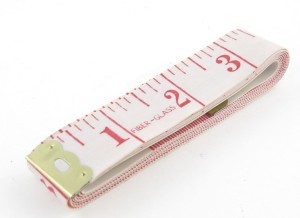 Anytime you are measuring for sewing, you need to use a flexible measuring tape, but until recently, I didn’t realize that cloth and plastic measuring tapes can stretch and become distorted over time. The flexible, fiberglass measuring tapes
Anytime you are measuring for sewing, you need to use a flexible measuring tape, but until recently, I didn’t realize that cloth and plastic measuring tapes can stretch and become distorted over time. The flexible, fiberglass measuring tapes don’t have the stretching/distortion issue, and are a much better choice. They really don’t cost much more, either.
WISH LIST
This is my list of items that would make the sewing process easier, but they are not necessities. To me, they also don’t quite reach the level of luxury items, either.
Rotary Cutter and Self Healing Mat
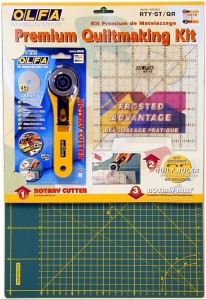 Rotary cutters and their self-healing mats are amazing for cutting fabric quickly and accurately, and the mats are a perfect cutting surface. I have several sizes of mats, and I use the one that most easily works for my current project.
Rotary cutters and their self-healing mats are amazing for cutting fabric quickly and accurately, and the mats are a perfect cutting surface. I have several sizes of mats, and I use the one that most easily works for my current project.
I am going to add a little caveat to this part of the post – I am not a quilter as much as I just like to make them from time to time; however, from the little experience I have quilting, I believe that these two items are a necessity for a quilter. They make the cutting and sizing process so much easier! On that note, I prefer to sew clothing, and I have not gotten used to cutting out patterns with a rotary cutter yet; however, I know several people who do and love it.
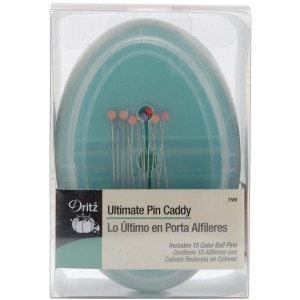 I remember sewing as a little girl, my mom had a tomato pin cushion we all used, and it had a smaller strawberry hanging off the side of it for sharpening needles. I though it was pretty cool. Then, my mom got a magnetic pin cushion, and I thought it was amazing! When my sister and I were younger and spilled pins, my mom could run it over the scattered pins and hey, presto! I don’t know what happened to the old stuffed “tomato” pin cushion, but I still use something similar to put pins in as I remove them from what I’m sewing. I have a ton of pins, so I just keep them in their box most of the time, and it works great except for the times I drop the box all over the floor.
I remember sewing as a little girl, my mom had a tomato pin cushion we all used, and it had a smaller strawberry hanging off the side of it for sharpening needles. I though it was pretty cool. Then, my mom got a magnetic pin cushion, and I thought it was amazing! When my sister and I were younger and spilled pins, my mom could run it over the scattered pins and hey, presto! I don’t know what happened to the old stuffed “tomato” pin cushion, but I still use something similar to put pins in as I remove them from what I’m sewing. I have a ton of pins, so I just keep them in their box most of the time, and it works great except for the times I drop the box all over the floor.
I included a magnetic pin cushion on my Christmas List this year, and I am really hoping one of my family members decides to get it for me. What a life (foot, arm, etc.) saver it would be!
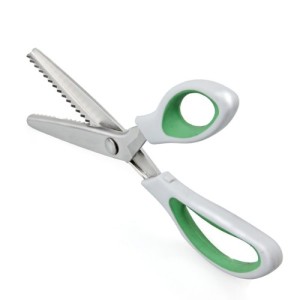 Pinking shears are scissors, the blades of which are sawtoothed instead of straight. They leave a zigzag pattern instead of a straight edge. Pinking shears have a utilitarian function for cutting woven cloth. Cloth edges that are unfinished will easily fray, the weave becoming undone and threads pulling out easily. The sawtooth pattern does not prevent the fraying but limits the length of the frayed thread and thus minimizes damage. If you don’t have a serger, they are nice for finishing seams on clothing so they won’t fray. I don’t have a nice set of pinking shears
Pinking shears are scissors, the blades of which are sawtoothed instead of straight. They leave a zigzag pattern instead of a straight edge. Pinking shears have a utilitarian function for cutting woven cloth. Cloth edges that are unfinished will easily fray, the weave becoming undone and threads pulling out easily. The sawtooth pattern does not prevent the fraying but limits the length of the frayed thread and thus minimizes damage. If you don’t have a serger, they are nice for finishing seams on clothing so they won’t fray. I don’t have a nice set of pinking shears yet, and they are on my list, as well.
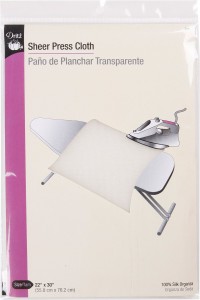 A good pressing cloth is a necessity, especially when pressing delicate fabric. It keeps your iron from contact with your fabric to avoid scorching, shiny spots and little stains. It also protects your iron when you use any type iron-on or fusible interfacing. Press through the cloth onto the wrong side of your fabric, avoiding the right side as much as possible. The nice thing about pressing cloths is that they can be made from fabric you may already have at home – old sheets, for example.
A good pressing cloth is a necessity, especially when pressing delicate fabric. It keeps your iron from contact with your fabric to avoid scorching, shiny spots and little stains. It also protects your iron when you use any type iron-on or fusible interfacing. Press through the cloth onto the wrong side of your fabric, avoiding the right side as much as possible. The nice thing about pressing cloths is that they can be made from fabric you may already have at home – old sheets, for example.
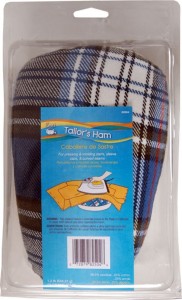
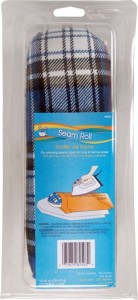 A tailor’s ham or pressing ham is a tightly stuffed pillow used as a curved mold when pressing curved areas of clothing, such as darts, sleeves, cuffs, collars, or waistlines. Pressing on a curved form allows a garment better to fit body contours. Similar to the pressing ham, the seam roll is an oblong pressing aid specially designed to pressing seams open once the two fabric pieces have been sewn together. I don’t have either of these, but now that I am starting to sew more tailored pieces of clothing, I am definitely going to need one. For now I have been using a rolled up towel, and it is working well enough. There are several tutorials online for how to make your own inexpensively, as well.
A tailor’s ham or pressing ham is a tightly stuffed pillow used as a curved mold when pressing curved areas of clothing, such as darts, sleeves, cuffs, collars, or waistlines. Pressing on a curved form allows a garment better to fit body contours. Similar to the pressing ham, the seam roll is an oblong pressing aid specially designed to pressing seams open once the two fabric pieces have been sewn together. I don’t have either of these, but now that I am starting to sew more tailored pieces of clothing, I am definitely going to need one. For now I have been using a rolled up towel, and it is working well enough. There are several tutorials online for how to make your own inexpensively, as well.
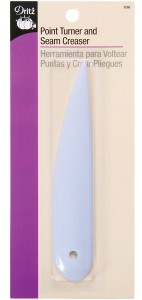 The point turner is a handy tool for sewing enthusiasts. You can use this plastic tool to turn over the fabric without causing any damage. It also helps to create sharp creases on the fabric and lets you unfasten basting stitches with ease. This package includes a 5-inch pointer turner and seam creaser tool.
The point turner is a handy tool for sewing enthusiasts. You can use this plastic tool to turn over the fabric without causing any damage. It also helps to create sharp creases on the fabric and lets you unfasten basting stitches with ease. This package includes a 5-inch pointer turner and seam creaser tool.
LUXURY WISH LIST
This list of items includes things that would be absolutely amazing to have, but are not something that is necessary or basic. This is my indulgence list – the stuff I really want, but would never spend money on for myself.
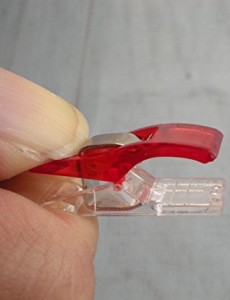
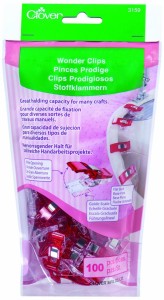 These mini clips feature great holding capacity and have a multitude of uses. Each clip opens wide to hold layers of fabric and the clip base is flat for easy feeding to the presser foot. They make a great alternative to pins. Perfect for making quilts, handbags, and more. You can’t pin through more than a couple layers, because either the pin has to bend or the layers have to ripple. Most home seamstresses can’t have an assistant on hand all the time, so clamps do the trick. The clips have measurement lines on the clear plastic back, so when you clip, you can easily see on the back side how far it’s “biting” into your fabric. This allows you to measure the depth of your fold or fabric edges while you’re clamping. That’s like having two extra hands – one to clamp and one to hold the ruler.
These mini clips feature great holding capacity and have a multitude of uses. Each clip opens wide to hold layers of fabric and the clip base is flat for easy feeding to the presser foot. They make a great alternative to pins. Perfect for making quilts, handbags, and more. You can’t pin through more than a couple layers, because either the pin has to bend or the layers have to ripple. Most home seamstresses can’t have an assistant on hand all the time, so clamps do the trick. The clips have measurement lines on the clear plastic back, so when you clip, you can easily see on the back side how far it’s “biting” into your fabric. This allows you to measure the depth of your fold or fabric edges while you’re clamping. That’s like having two extra hands – one to clamp and one to hold the ruler.
Omni Grid Portable Cutting/Pressing Station
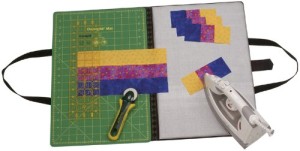 This is an amazing product, and I would use it a lot if I traveled with my sewing. The gridded cutting mat and non-stick ironing surface are side by side. It can be used on any work surface. You can use both sides or fold one under. Folds for convenience, includes easy storage, and has handles for easy carrying. Features a velcro closure that keeps it securely shut when not in use. Great for travel.
This is an amazing product, and I would use it a lot if I traveled with my sewing. The gridded cutting mat and non-stick ironing surface are side by side. It can be used on any work surface. You can use both sides or fold one under. Folds for convenience, includes easy storage, and has handles for easy carrying. Features a velcro closure that keeps it securely shut when not in use. Great for travel.
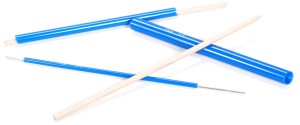 Quick Turn comes with 3 sizes of plastic cylinders and wooden rods used to push and turn fabric tubes quickly and easily. I say this tool is a luxury because there are other tools that do the same job, just not quite as easily or quickly. I use either an unsharpened pencil or a crochet hook right now, but these quick turns would be a dream!
Quick Turn comes with 3 sizes of plastic cylinders and wooden rods used to push and turn fabric tubes quickly and easily. I say this tool is a luxury because there are other tools that do the same job, just not quite as easily or quickly. I use either an unsharpened pencil or a crochet hook right now, but these quick turns would be a dream!
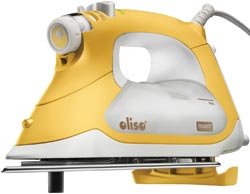 This iron is the Rolls Royce of irons. To me, it is a total splurge, and it would be akin to my fabric scissors – nobody touches my fabric scissors. This model of Oliso Iron lifts when you take your hand off the handle, preventing scorching, burns and many safety hazards. It has an extended cord and auto shut-off. The 12-foot cord with 360-degree pivot allows for greater range of movement, and the 30 minute shut off allows time to work while iron stays hot.
This iron is the Rolls Royce of irons. To me, it is a total splurge, and it would be akin to my fabric scissors – nobody touches my fabric scissors. This model of Oliso Iron lifts when you take your hand off the handle, preventing scorching, burns and many safety hazards. It has an extended cord and auto shut-off. The 12-foot cord with 360-degree pivot allows for greater range of movement, and the 30 minute shut off allows time to work while iron stays hot.

Nature Girl. Mom. Wife. Friend. Photographer. Sewer. Crafter. Artist.
To borrow a phrase – “Yeet Ye Riche”
